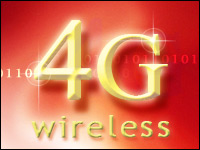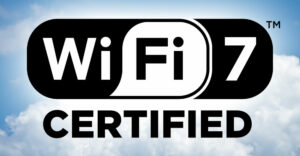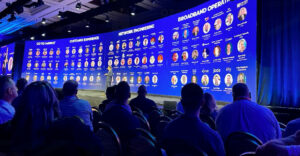Today, there is a significant deployment of 3G/3.5G networks, supporting a whole range of bandwidth-intensive applications such as audio and video streaming. Consumers are looking to replicate their Internet experiences from wired broadband services even while they are on the move.

The phenomenal success of smartphones (especially iPhones and BlackBerry phones), netbooks and tablet PCs (especially iPads) has resulted in a sudden surge in data bandwidth usage on the wireless operator’s access networks. Several operators are addressing this data tsunami problem by resorting to application prioritization, combined with tiered pricing as a replacement for flat-rate pricing model. While this can be a good short-term palliative, wireless operators are strategically exploring the next-generation wireless technology (4G) to help alleviate this problem in the long term.
Currently, the two prominent choices for 4G wireless access technology are WiMax and LTE. These two technology options have a lot of similarities. The radio access networks for both are based on OFDM with support for MIMO antennas. Both are “all-IP” networks in the core as well as access component, and both support speeds >50Mbps (Note: subscribers could expect consistent speeds of 10Mbps).
However, their origins and pedigrees are different and hence, their respective priorities vary. Given this, it is likely that WiMax and LTE will co-exist as sibling technologies for 4G wireless and complement each other by focusing on their respective areas of strength rather than competing with each other for operators’ attention.
Origins of Technology
WiMax comes in two flavors — fixed and mobile — and has evolved from WiFi/WLAN technology to support a higher bandwidth as well as an increased range of more than ~30km. With its standards ratified by IEEE, WiMax positions itself as the wireless broadband access technology for data applications.
This “data-centric” approach works well for applications such as high-quality video streaming (over IP networks) and is expected to be consumed primarily by laptops and netbooks instead of smartphones. Hence, support for high-quality voice may not be a top priority for WiMax network operators, though voice services will be provided through standard VoIP applications. Without elaborate QoS support for voice applications, the voice quality is likely to be inferior to that of digital circuit-switched networks. Further, there is no accepted standard for voice services over WiMax to date.
LTE, on the other hand, has evolved within the 3GPP standards body and is positioned as the evolution from the current 3G/3.5G technologies for cellular operators. Taking the “voice-centric” approach, where voice is still considered as the “killer-app” for cellular operators, LTE has thrust a lot of importance to make the voice-application work very well on top of LTE. For example, LTE has been designed to work on the 700 MHz spectrum to efficiently support voice applications across longer distances and with higher in-building penetration.
LTE also comes in two flavors, namely, FDD-LTE and TDD-LTE. Frequency Division Duplex LTE uses two different frequency ranges for uplink and downlink communication — hence requires more spectral bandwidth. Time Division Duplex LTE uses different time-slots for uplink and downlink communication, but on the same frequency band. WiMax (which also uses TDD) and TDD-LTE, therefore, are spectrally very efficient for communication.
Present Scenario
Commercial WiMax deployments have been going on for a few years now, touching nearly 600 deployments spanning across 150 countries today. These networks offer the end-user a rich and consistent broadband experience and work well for data applications. For voice services, the WiMax operators typically fall back to the 2G/3G option (through partnerships), thereby requiring a 2G/3G network to remain co-existent along with the WiMax network.
LTE, the 3GPP-based standard, is still in its very nascent stages. While trials have started in many operator networks today, the commercial rollouts of LTE have been very limited. The year 2010 started out with commercial LTE deployments by TeliaSonera in Sweden and Norway, and it is expected that about 20 deployments will be ready by end of 2010.
In the U.S., LTE trials are going on with both Verizon and AT&T, with a commercial deployment to be ready in 2011.
In Europe, Tier1 operators such as Telefonica and Vodafone are conducting LTE trials, to be soon followed by a commercial deployment. The APAC region is aggressively pursuing LTE trials with China Mobile, Chungwa Telecom, NTT Docomo, SK Telecom, Telstra and KDDI leading the pack — and some of them are expected to have commercial launches in 2010 itself.
Though many operators are trialing LTE today, the expectations are that it will take at least another couple of years (year 2012 and beyond) before we see more widespread commercial LTE deployments, supported by an ecosystem of easily available data dongles and smartphones capable of supporting LTE, combined efficiently with interoperability agreements across multiple operators for roaming users.
Some Recent Shifts
Growth of WiMax could be negatively impacted due to some of the recent strategic decisions taken by a few WiMax operators. Clearwire, a WiMax-based operator in the U.S., recently announced the trial of LTE services (in an overlay/co-existent mode) in the coming few months. While the outcome may eventually favor either technology, the investment needed to trial the LTE service will obviously distract Clearwire from growing its WiMax business to the fullest.
On a similar note, Sprint, another WiMax service provider in the U.S., announced the possibility of acquiring T-Mobile’s GSM assets in North America, with the focused intent of growing its LTE footprint.
In Europe, Yota, a Russia-based WiMax provider, has initiated a plan to overlay LTE networks in five cities in Russia this year with an investment of close to US$1 billion. Again, this investment obviously comes at the expense of WiMax growth.
Announcements from India are mixed after the recently concluded spectrum auction for technology-agnostic Broadband Wireless Access (BWA). Infotel, the PAN-India license winner, has no legacy infrastructure and is likely to roll out the well-proven and mature WiMax services with the intent of immediate monetization.
Qualcomm, another license winner with no legacy infrastructure, announced its intent to roll out LTE jointly with two partners. Bharti-Airtel remains undecided at this time, though it is likely that it will align with the LTE solution.
Deciding Factors
Both WiMax and LTE are equally viable alternate technologies for the next-generation wireless networks. The decision by an operator to choose one or the other, therefore, becomes a business decision rather than a technology decision.
One hypothesis is that operators with little or no prior legacy infrastructure in 2G/3G networks can easily opt for the WiMax route and monetize their deployment for near-term returns. WiMax is ready today — here and now. It can be deployed quickly and is supported by a vibrant ecosystem of devices, including dongles and embedded chips.
The readiness of LTE and its immediate monetization is questionable, especially given that operators need to take some risks toward building an LTE-based viable service. Infotel’s decision in India strongly validates this hypothesis — especially in a price-sensitive, risk-averse market like India.
On the other hand, operators with legacy rollout in 2G/3G networks are likely to take the LTE path in line with the recommendations made by 3GPP. There is a significant cost associated with 3G->4G migration, given that the technology in the access as well as core has to be completely revamped.
Another alternative is possible. For the near-term advantages, an operator could roll out WiMax services initially and eventually migrate to LTE. Given the technological similarities between the two technologies, the eventual migration to LTE, especially TDD-LTE, could re-use about 70 percent of the WiMax rollout, thereby minimizing additional capital expenditure.
Finally, the success of 4G depends not just on the technology, but how the operators roll it out to provide the most flexible set of services to their end-users.
Senior Vice President R Venkateswaran, Ph.D., is Head of the Telecom Business Unit for Persistent Systems.











































